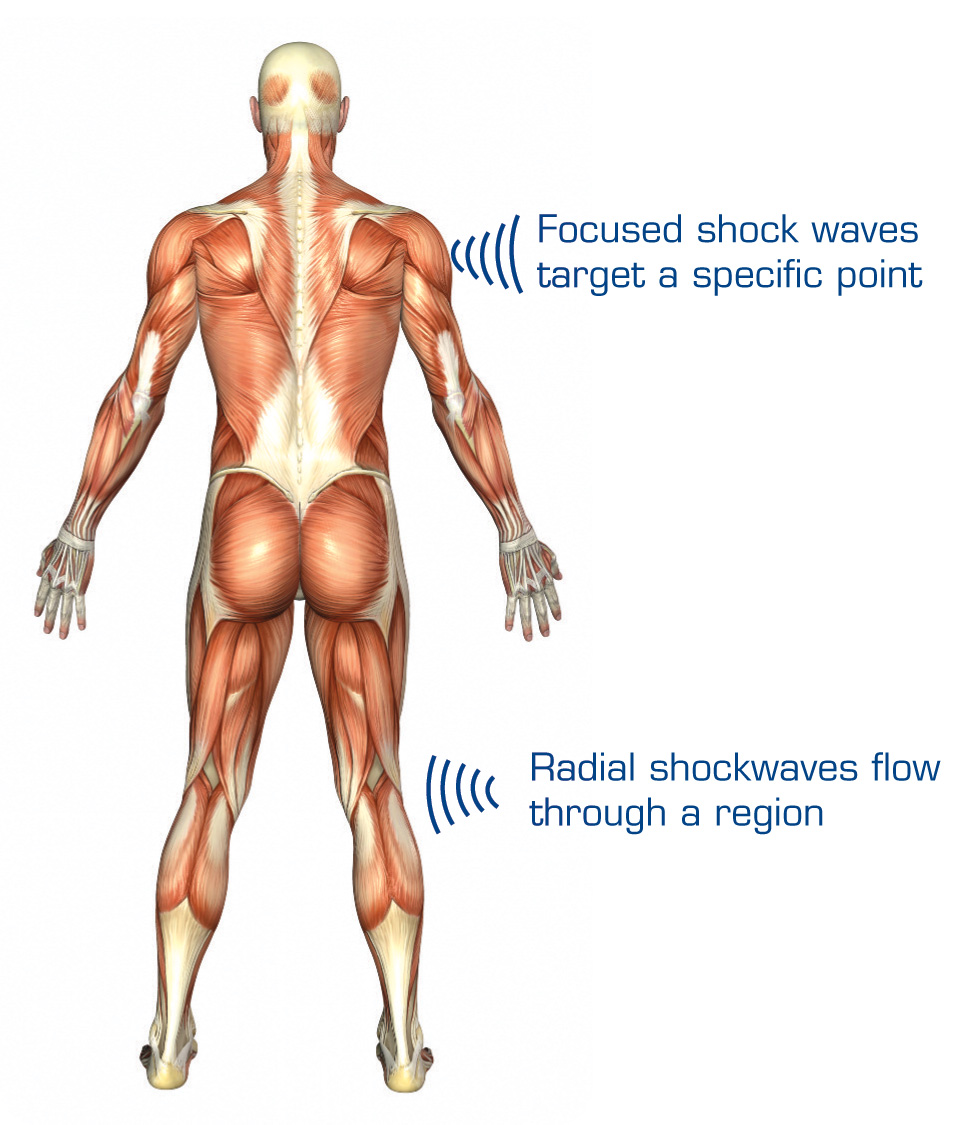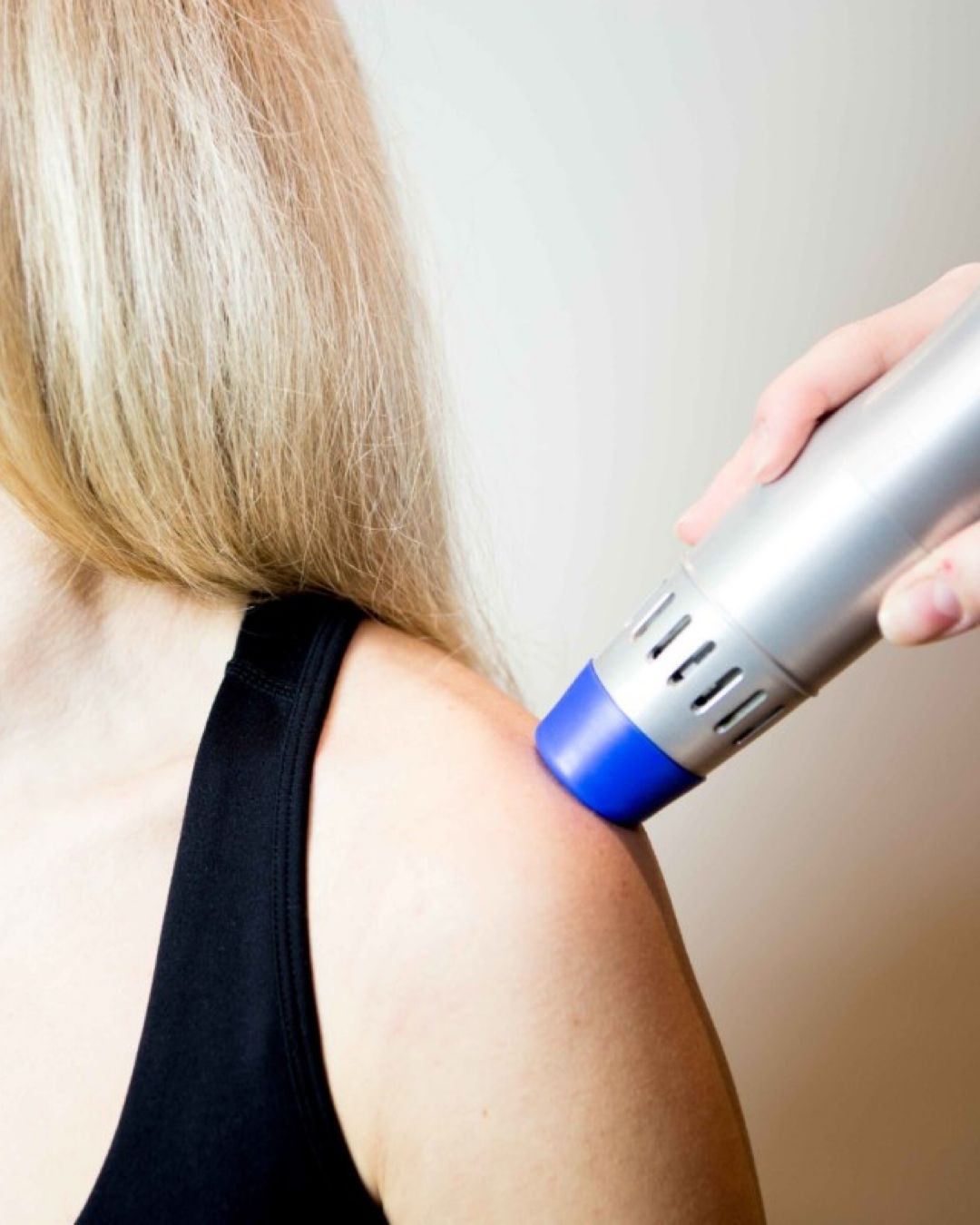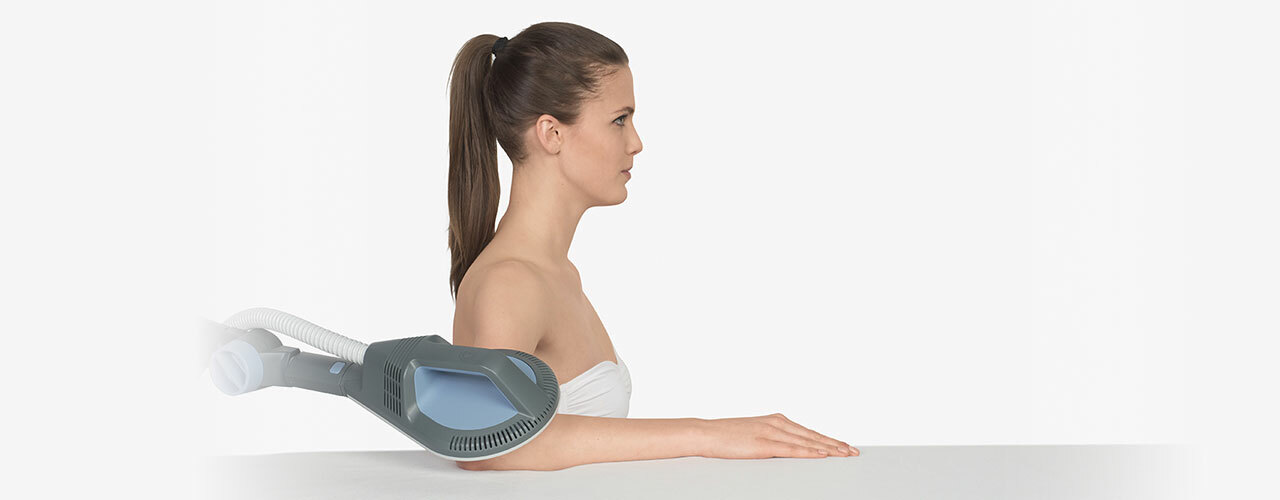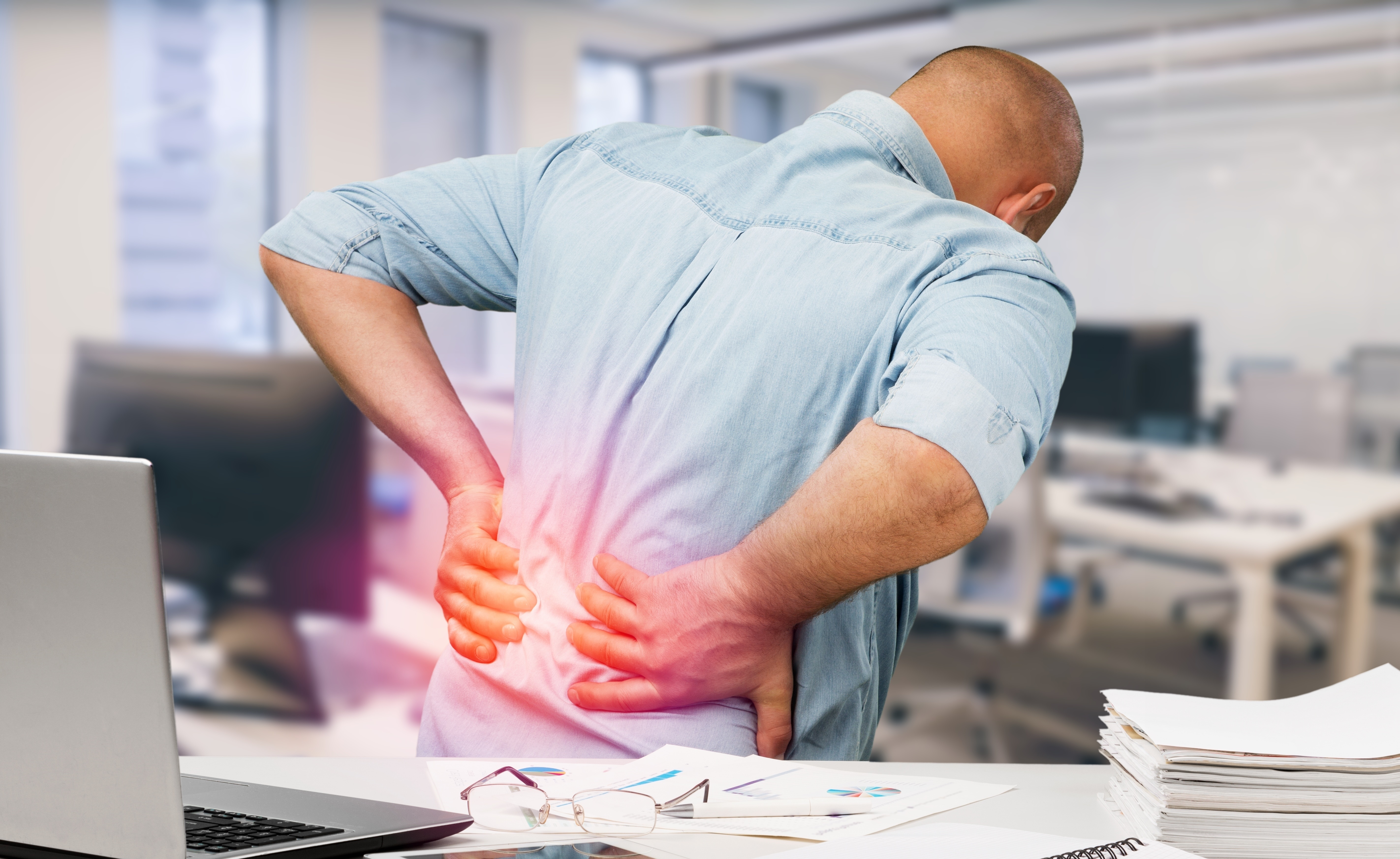What is Radial Shockwave therapy?
Therapeutic Radial Shockwaves are simply controlled pressure waves that are created when a ballistic projectile is accelerated and then impacted against a stop-plate inside a specially designed handpiece.
The primary effect of these shockwaves is a direct mechanical force that occurs at a cellular level as the wave’s energy passes through tissue. These waves cause a controlled impact on the tissue being treated. 1 The result is a biological reaction within the cells of that tissue which causes an increase in blood circulation through the injured site and triggers the body to accelerate its natural healing processes. Radial shockwave physiotherapy treatments increase the metabolic activity around the site of pain or discomfort. It stimulates the re-absorption of irritative calcium deposits in tendons, accelerates the body’s natural healing process, and reduces pain.
Research indicates that the mechanical stimulation produced by Shockwaves is capable of inducing positive reactive processes in the cellular structure of injured tissue. The most commonly observed reactions in tissue treated with Shockwave Physiotherapy are; • Increased Metabolism • Expression of Substance P (a growth & pain mediator hormone) • Improvement of cellular tensile stability • Altered cell membrane permeability • Increased cell activity by Gene Expression • Overall improvement of cellular structure • Re-absorption of calcium deposits in tendons
Radial versus Focused Shockwave and ESWT
Extracorporeal Shock Wave Therapy (ESWT) is a term most commonly associated with Focused Shockwave therapy, although some distributors and researchers also use this terminology to refer to Radial Shockwave Therapy.
The first medical treatment developed using shockwave physiotherapy was lithotripsy. This allowed focused shockwaves to specifically target and essentially dissolve kidney stones without surgical intervention.
More recently, focused shockwave therapy has been offered for orthopedic treatments. There are usually get deeper tissues and are more expensive units.
Research shows that for many conditions, Radial extracorporeal shockwave delivers good results for more superficial tissues.

Treat Difficult Conditions More Effectively
Radial Shockwave physiotherapy can be used to effectively treat; • Insertion Tendonopathy • Heel Spurs / Fasciitis Plantaris • Epicondylopathy radialis /Ulnaris • Patellofemoral Syndrome /Achillodynia • Myofascial Pain Syndromes • Tibialis anterior Syndrome • Impingement Syndrome • Trigger Point Therapy • Bursitis • Osteoarthritis • Shoulder Tendinitis • Tendon calcifications
Radial Shockwave physiotherapy has proven to be an effective treatment option for these conditions. It is unique in its ability to treat conditions that have become chronic, where other more traditional therapies or modalities have not proven effective.
Patients treated with Radial Shockwave physiotherapy frequently report immediate response to their treatment. Most report a significant reduction in pain and a noticeable improvement in mobility after their very first treatment.
Shockwave Therapy FAQs
Is Radial Shockwave Therapy Effective?
Yes. Clinical research has been ongoing for decades and the published data clearly shows that Radial Shockwave Therapy is a highly effective treatment option for many musculoskeletal conditions and injuries.
Radial Shockwave physiotherapy works without the need for drugs, stimulates the body’s natural ability to heal itself, and in some cases can even help eliminate the need for invasive surgery.4
How long does a radial shockwave therapy treatment take?
Individual Shockwave Physiotherapy treatments usually involve delivering about 2,000 Shockwave pulses or “shots” per treatment area. This takes about 5 minutes. Most conditions require between 3 and 6 treatments in total, chronic conditions may take more treatments. Normally the treatment protocol recommends between 1 and 3 treatments per week. The patient’s body requires “rest & repair” time between treatments to allow for natural, accelerated healing.
How long before the patient reports any Improvement?
Unlike many other forms of therapy, Shockwave physiotherapy can generate virtually immediate positive results. Even after just one treatment, patients usually report; • A significant reduction in pain. • Improved Mobility (range of motion). • More normalized muscle tone. • Muscle “knots” or tightness are usually gone or noticeably reduced & relaxed.
How does a radial shockwave therapy system work?
A small metal projectile is accelerated at a very high speed inside the handpiece until it impacts against a stop plate. The collision caused by this action generates a mechanical pressure wave. This pressure Wave of energy is transferred through an applicator head at the end of the handpiece which directs and sends the energy into the selected treatment area.1
By adjusting specific control parameters, Shockwave physiotherapy can be modified to treat a number of different musculoskeletal conditions and individual treatments can be customized to “fit” any patient type. Treatments can be modified and customized by adjusting; the amount of energy used, the frequency of the Shockwaves, the number of “shots” (or pulses) per treatment, and the size of the applicator head. Our Zimmer Shock/Pulse wave is made in Germany and it is Health Canada approved. This unit allows a slower rise of the wave (approx. 13.5 µs vs 3.5 µs) and a significantly lower peak amplitude avoiding the typical whiplash effect of air-compressed shockwave, making it easier for the patient to tolerate.
At Simply Align Rehab we have not one but two different shockwaves. The Zimmer shockwave seen above is an electromagnetic machine. We also use a pneumonic shockwave made by BTL.
Extracorporeal acoustic wave therapy (in contrast with lithotripsy) is not used to disintegrate tissue but rather to cause microscopic interstitial and extracellular biological effects which include e.g. tissue regeneration. Application of shock waves leads to significantly increased expression of growth indicators such as eNOS, VEGF, PCNA and BMP. Newly formed blood vessels improve blood supply and oxygenation which leads to faster healing. Acoustic waves also cause mast cell activation which supports chronic inflammation reversal. Other effects include stimulation of collagen production, calcified fibroblasts dissolution, and dispersion of pain mediator substance P.
This technology is available is at in both clinics in Toronto (Scarborough) at 3630 Lawrence Ave East, and Vaughn (Woodbridge) at 200 Marycroft Ave Unit 6.




